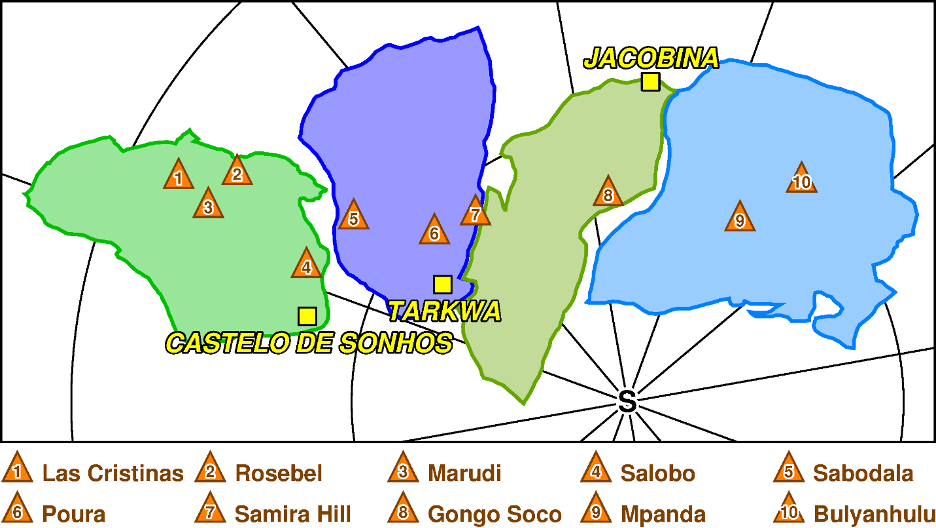Geology and Mineralization
The Castelo de Sonhos property encompasses a 15km by 12km plateau in the Tapajós region of Pará State. It has an average elevation above sea level of approximately 600m and stands around 350m above the surrounding plains.
The Castelo de Sonhos Formation is a package of sandstones and conglomerates which form a roughly circular plateau surrounded by intrusive granites of the Tapajós-Parima Province.
The gold mineralization is generally associated with the conglomerate reefs. The main alteration types are hematite and silicification, although these are not believed to be directly linked to the deposition of the gold in the conglomerates.
Analogous Deposits
| TARKWA | JACOBINA | CASTELO DE SONHOS | |
|---|---|---|---|
| Location | Ghana | Brazil | Brazil |
| Age (Ga) | 2.1 | 1.88 ─ 2.09 | 2.1 |
| Total Deposit (Moz Au) | ~30 Moz Au | ~10 Moz Au | tbd |
| Mine Type | Open Pit & Underground | Open Pit & Underground | Initially Open Pit |
| Grade | 1.2 g/t (pit) | 1.9 g/t (pit) | 1.1 g/t |
| Underground Grade | > 6 g/t | 2.5 ─ 9.5 g/t | - |
| Thickness of Mineralized Zones | ≤ 8 m | ≤ 25m | ≤ 20m |
| Host Rock | Quartzites and pebble conglomerates | Quartzites and pebble conglomerates | Quartzites and pebble conglomerates |
Two billion years ago, a large continent lay near the South Pole, with a chain of lode gold deposits along its central mountain ridge. Gold accumulated in placer deposits down-slope, in alluvial fans, on beaches and in the near-shore marine environment. In modern times, these now include gold deposits at Tarkwa, Jacobina and Castelo de Sonhos.

